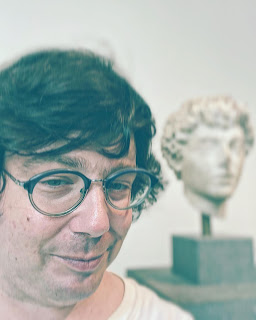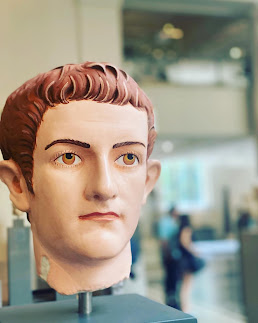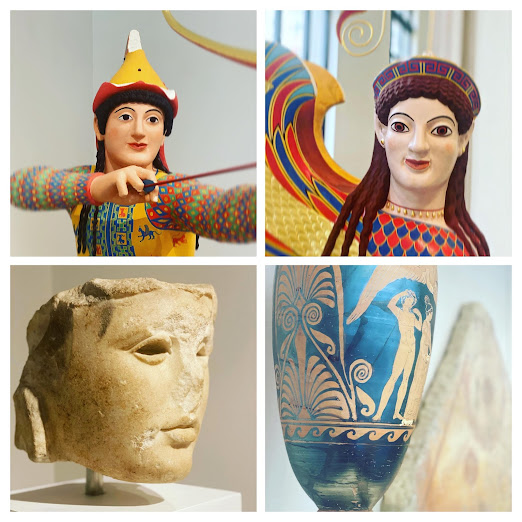In this post, I recount a recent visit to the Metropolitan Museum of Art, where I saw dozens of color reconstructions of ancient Greek and Roman works of art. Simply fabulous.
 |
| Greig poses in front of a young Marcus Aurelius in the Ancient Greek and Roman wing of the Metropolitan Museum of Art in New York City. |
 |
| Marble head of the youthful Marcus Aurelius ca. C.E. 138. |
But go to a museum today, and you see staid marble and what appears to be a vast collection of grays, browns, and three-dimensional black and white photographs. But the pigments and paints decay. And the weathering of the seasons and the march of time have made most color drain away.
But the coloration is still there, in small traces — which the Chroma exhibition at the Metropolitan Museum of Art has attempted to recapture — to see ancient artworks in color again. Alas, you won’t see the now lost statue of Zeus at Olympia, but you will see that same artist’s head of Athena, which at one time had ebony eyes. I especially liked the bronze warriors. And the Sphinx in color was fantastic.
If you have a moment and you are in New York — take a moment and experience these reconstructions done by Prof. Dr. V. Brinkmann & Dr. U. Koch-Brinkmann. @metmuseum @metgreekandroman
 |
| Reconstruction of a marble portrait of the Emperor Gaius Julius Caesar Augustus Germanicus, known as Caligula, Variant B. |
 | ||||
| [1] Reconstruction the bronze statue from the Quirinal in Rome of the so-called Terme Rule. [2] Reconstruction of bronze Riace Warrior (mid-view detail). |




